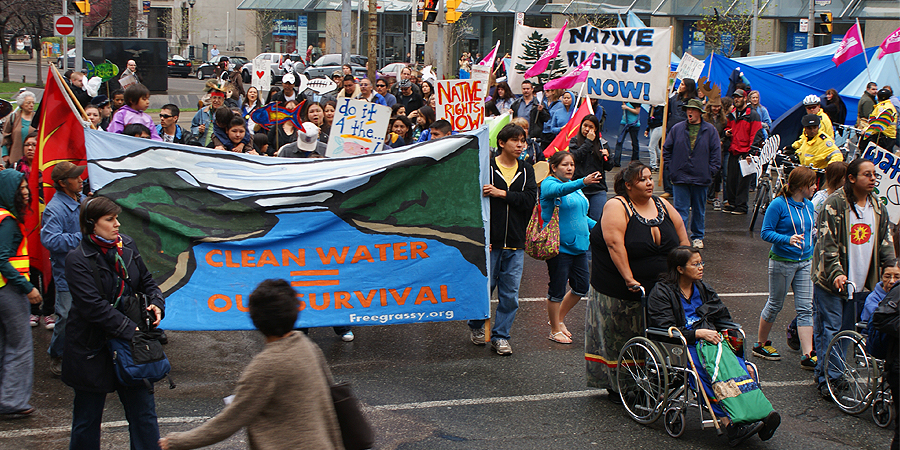On the night of December 2, 2002, with temperatures below zero, two sisters and young Indigenous mothers from the Grassy Narrows First Nation drove from their reserve, located in the southern fringe of the vast Boreal Forest in northern Ontario, to a logging road just a few miles from their home and felled trees over the road to protest unwanted logging on their land. Their protest was the spark that ignited their small community of 1,000 to launch the longest standing logging blockade in North America, which continues to this day.
In June 2008, the people of Grassy Narrows celebrated victory when AbitibiBowater (now Resolute Forest Products), one of the largest paper companies in the world, agreed to stop logging on 1 million acres of Grassy Narrows traditional territory in the Whiskey Jack Forest. However, in late 2013, Ontario’s Ministry of Natural Resources finalized and approved a new 10-year Forest Management Plan, which again calls for clear-cutting forests on Grassy Narrows territory without consent.
To help address this latest threat, RAN’s Protect-an-Acre program is supporting a project being led by Asubpeeschoseewagong Oshkaadiziwag Kagobewat– a community-led group whose name translates to Grassy Narrows Youth Organization. GNYO is a new organization formed by Indigenous youth and have been participating in the Grassy Narrows blockade for years and learning skills at annual youth gatherings where Elders have taught traditional skills and knowledge about how to use the land and to help reclaim Anishinaabe culture and continue the struggle against unwanted logging. Some GNYO members were not yet teenagers when RAN began supporting these efforts by the Grassy Narrows community.
This grant is supporting the Save Keys Lake Campaign, which has the goal of removing the Keys Lake cut block from the logging plan and to have it declared a protected area. This campaign is intended to serve as a catalyst for GNYO to build confidence and capacity. In planning and running the campaign, a new group of Indigenous youth are getting the opportunity to put into place various traditional organizing models, build relationships in the community, continue to learn traditional skills from Elders and to establish themselves as leaders in their community.
This campaign is part of the overall “trapline strategy” being employed by Grassy Narrows, which seeks to combine land protection and cultural resurgence as a single process through building traditional structures on family traplines to demonstrate ongoing use of land throughout Grassy Narrows territory. The big picture goal is to leverage the Save Keys Lake Campaign together with other community-led efforts in order to force the outright cancellation of the 10-year Forest Management Plan.

